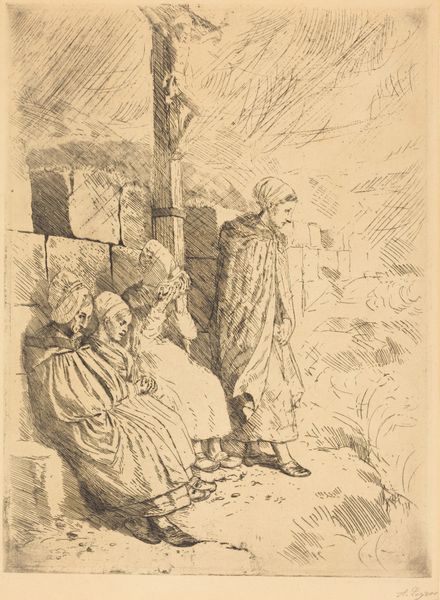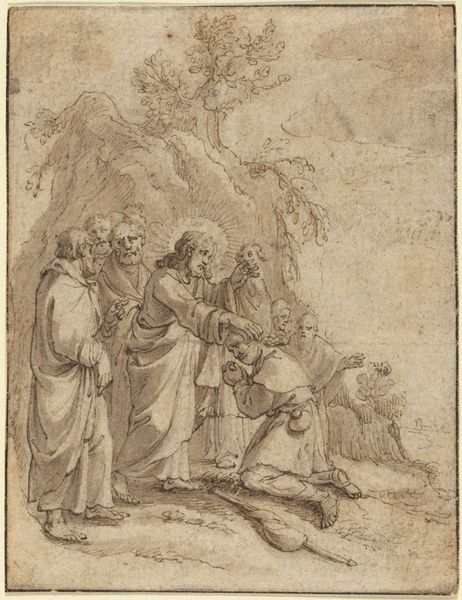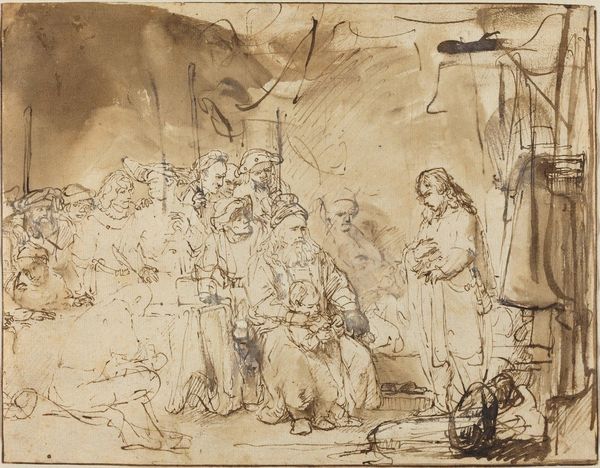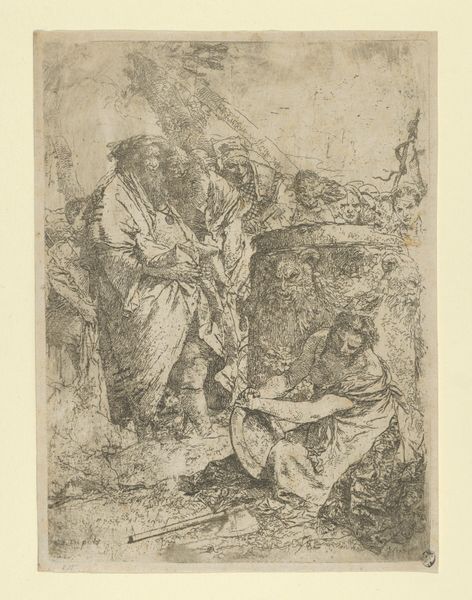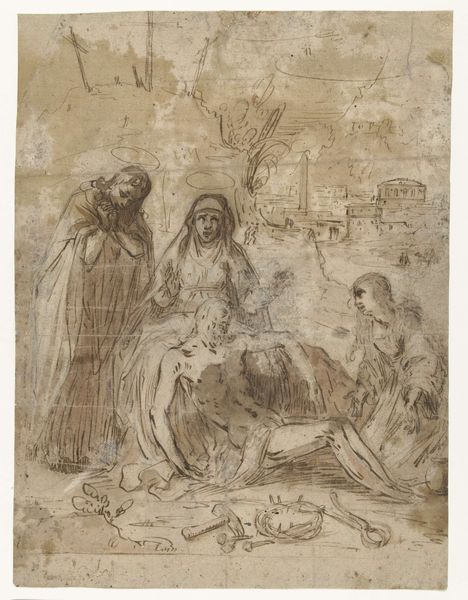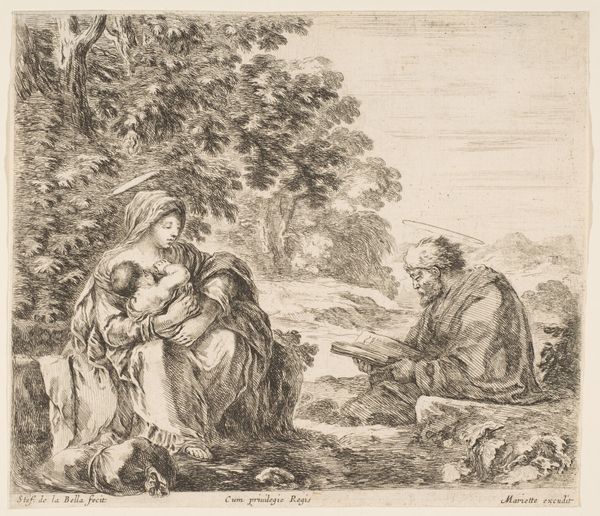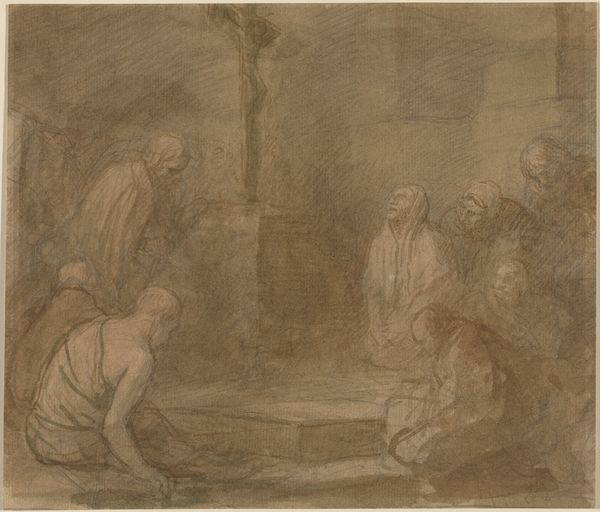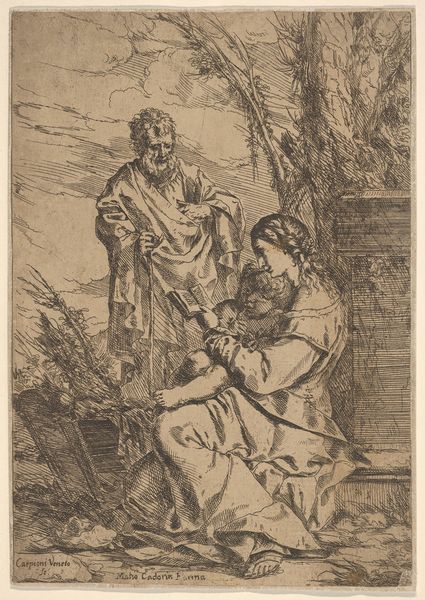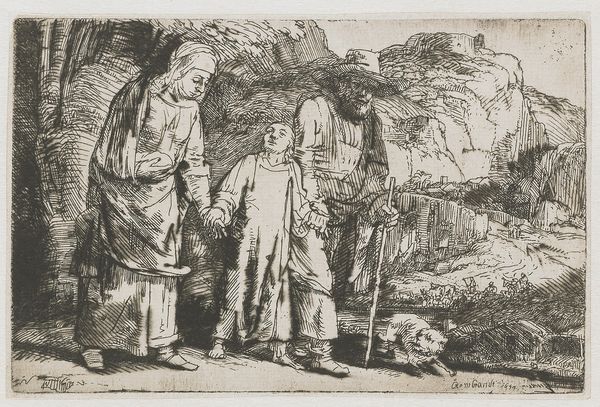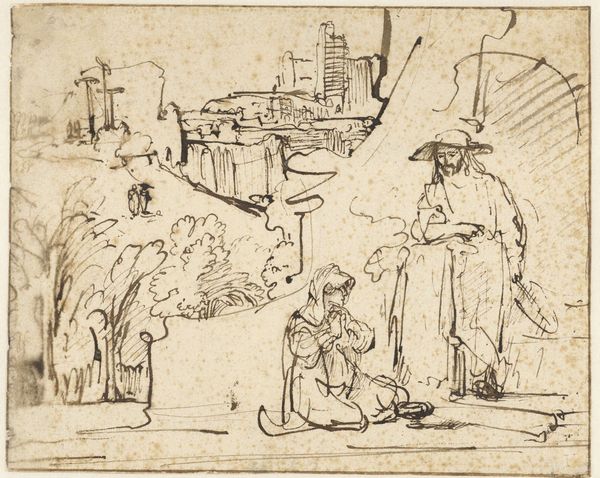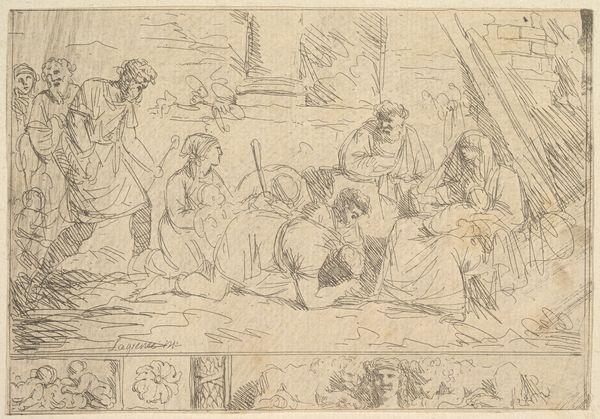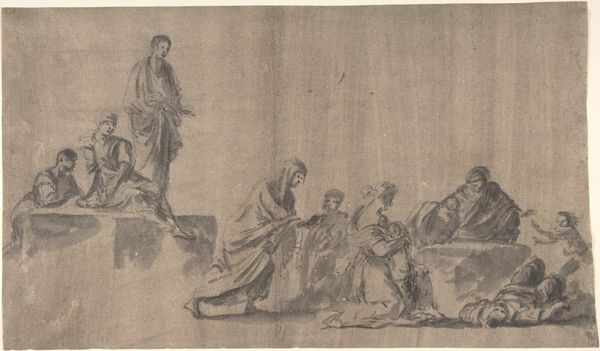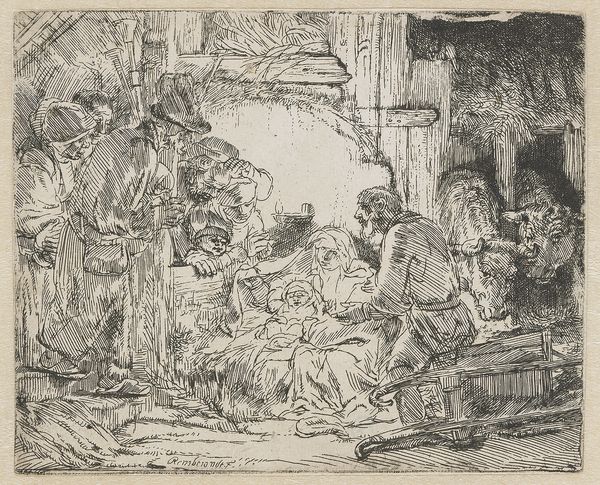
drawing, paper, ink
#
portrait
#
drawing
#
paper
#
ink
#
genre-painting
#
realism
Dimensions: Overall: 15 x 14.9 cm (5 7/8 x 5 7/8 in.) support: 18 x 17.4 cm (7 1/16 x 6 7/8 in.)
Copyright: National Gallery of Art: CC0 1.0
Curator: Alphonse Legros' "English Beggars," created using ink on paper, presents a scene that feels both intimate and deeply unsettling. What are your immediate reactions? Editor: Bleakness. That's the first word that comes to mind. The monochromatic palette, the gaunt faces of the figures... it speaks to destitution and despair, really highlighting social inequities. Curator: Exactly. The stark medium accentuates the raw physicality of their situation. Look at the paper itself - almost flimsy. You can imagine Legros wrestling with inexpensive materials, acutely aware of resource constraints mirroring the lives of his subjects. Do you think that’s part of the artwork's intentional social commentary? Editor: Undeniably. Legros doesn't romanticize poverty. These are not picturesque paupers for bourgeois consumption. The drawing depicts people marginalized by society. Notice how their gaze avoids direct eye contact? This evokes feelings of shame, resignation, and, for the viewer, complicity. There is that tall male figure towering behind them, suggesting the figures are at risk of becoming displaced due to capitalist structures of inequality and private property laws. Curator: The lines are almost brutal, aren’t they? Quick, gestural. This shows his mastery and economy of means but it also hints at the grueling and almost production-line reality of the drawing practice itself in the Victorian era. Perhaps it subtly underscores the relentless, unforgiving nature of poverty itself. Editor: The composition further intensifies this sense of displacement. They're grouped on the lower half of the drawing, leaving a vacant upper space – symbolic, perhaps, of limited opportunities, of being trapped in a social hierarchy that’s difficult to transcend. It powerfully communicates their collective powerlessness. Curator: And by employing drawing – a readily accessible medium, in theory, although one requiring rigorous training– Legros is acknowledging that art, too, has a relationship with accessibility and social stratification. Do certain mediums confer greater value simply due to the resources, class connotations and labor necessary? Is Legros interrogating those hierarchies too? Editor: Possibly. Art functions as both a reflection of society and a commentary on its structures. "English Beggars" accomplishes both, forcing us to confront uncomfortable realities, encouraging, even demanding a response to inequality. Curator: It is an invitation, then, not just to look, but to reflect upon what that means. I find Legros' starkness here more resonant because of this refusal to allow aesthetic beauty to mask the urgent message, given it would be easy to fall back into conventional sentimentality with subject matter like this. Editor: A crucial perspective. For me, reflecting on the layered sociopolitical messaging underscores how vital this kind of artwork is to spur necessary change.
Comments
No comments
Be the first to comment and join the conversation on the ultimate creative platform.
